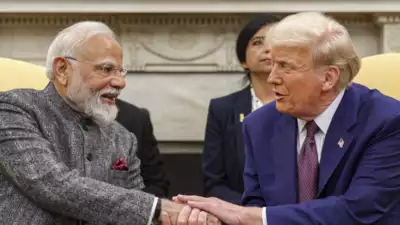The buzz is building as officials from India and the United States are set to commence crucial bilateral trade talks tomorrow, Wednesday, March 26th, 2025. With an ambitious goal to finalize the first part of the agreement by September or October this year, the stakes are incredibly high for both economic powerhouses. A US-India Trade Deal, successful agreement could reshape trade dynamics, boost economic growth, and strengthen the strategic partnership between the two nations. But what are the potential game-changers we should be watching out for? Here’s a ranking of the areas where significant breakthroughs could have the most profound impact:

1. Significant Tariff Reductions and Market Access for Agricultural Goods:
- Why it’s a huge game-changer: Agriculture remains a vital sector in India, employing a large portion of the population. Gaining greater access to the US market for Indian agricultural products like fruits, vegetables, spices, and processed foods would be a massive win. Conversely, reduced tariffs on certain US agricultural exports to India could benefit American farmers. This area is often a sticking point in trade negotiations, but substantial progress here would signal a strong commitment from both sides and have a direct impact on livelihoods.
- Potential Impact: Increased farm incomes in India, more competitive pricing for certain agricultural goods in the US, and a significant boost to bilateral agricultural trade.
2. Intellectual Property Rights (IPR) Agreement:
- Why it’s a major game-changer: A robust and mutually agreeable framework for IPR protection is crucial for fostering innovation and investment, particularly in sectors like pharmaceuticals, software, and technology. Disagreements over IPR have been a recurring challenge in US-India trade relations. A strong agreement would provide greater certainty for US companies operating in India and incentivize more Indian innovation by ensuring proper protection.
- Potential Impact: Increased foreign direct investment in R&D in India, stronger protection for pharmaceutical patents, and a more level playing field for technology companies.
3. Streamlined Regulatory Processes and Standards US-India Trade Deal Alignment:
- Why it’s a substantial game-changer: Navigating different regulatory landscapes and standards can be a significant hurdle for businesses on both sides. If the trade agreement leads to greater harmonization of standards, mutual recognition of certifications, and more transparent regulatory processes, it could significantly reduce the cost and complexity of doing business. This is particularly important for sectors like medical devices and pharmaceuticals.
- Potential Impact: Lower compliance costs for businesses, faster market entry for goods and services, and increased efficiency in trade flows.
4. Digital Trade and E-commerce Provisions:
- Why it’s an important game-changer for the future: The digital economy is rapidly growing, and clear rules governing digital trade, data flows, and e-commerce are essential. An agreement that addresses issues like cross-border data transfer, online consumer protection, and the prohibition of digital protectionism would pave the way for greater collaboration in the digital space and benefit businesses involved in online services and e-commerce.
- Potential Impact: Increased opportunities for Indian IT companies in the US market, growth in cross-border e-commerce, and a more predictable regulatory environment for digital businesses.
5. Increased Market Access for Services:
- Why it’s a significant game-changer, especially for India: India has a strong services sector, particularly in IT and business process outsourcing (BPO). Securing greater market access for Indian service providers in the US, including easing visa restrictions for professionals, would be a major boost for the Indian economy. Similarly, increased access for US service providers in sectors like finance and education in India could also be beneficial.
- Potential Impact: Increased employment in India’s services sector, greater revenue for Indian IT companies, and enhanced competition in the services sector in both countries.
6. Investment Promotion and Facilitation:
- Why it’s a beneficial game-changer for long-term growth: Measures aimed at promoting and facilitating investment flows between the two countries can have a significant impact on long-term economic growth. This could include establishing mechanisms for investor protection, simplifying investment approval processes, and fostering a more attractive investment climate.
- Potential Impact: Increased foreign direct investment in both countries, job creation, and economic diversification.
7. Addressing Non-Tariff Barriers:
- Why it’s a crucial, albeit less flashy, game-changer: Non-tariff barriers, such as cumbersome customs procedures, technical regulations, and sanitary and phytosanitary measures, can often be more restrictive than tariffs. Addressing these barriers effectively would significantly ease the flow of goods and reduce trade frictions.
- Potential Impact: Reduced delays and costs associated with trade, smoother customs processes, and increased predictability for businesses.
While the specific details of the agreement are yet to be negotiated, these are some of the key areas where progress could lead to substantial benefits for both the US and India. As the talks commence tomorrow, all eyes will be on whether negotiators can bridge existing differences and forge a trade agreement that unlocks the immense economic potential of this crucial partnership. The outcome of these talks could have ripple effects across the global economy for years to come.
